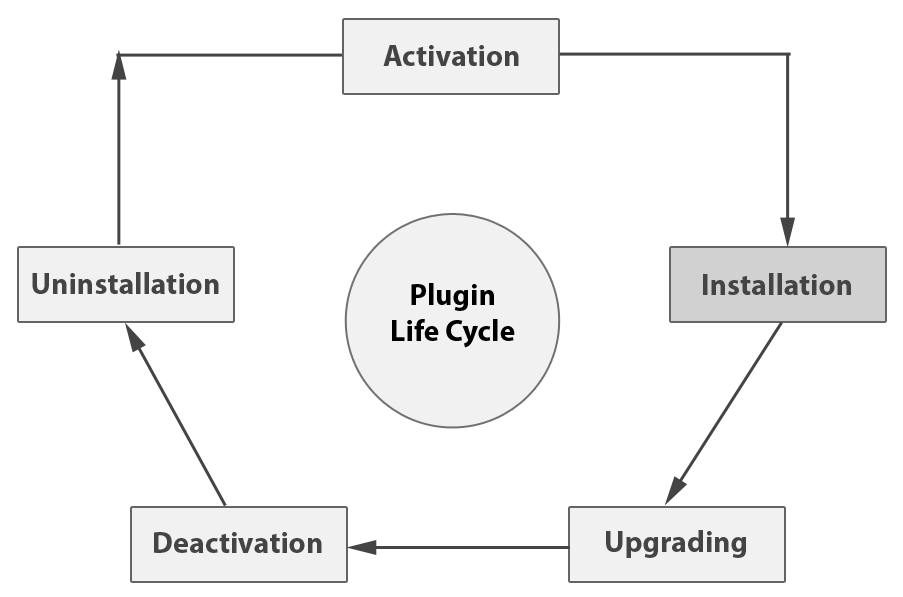A product life cycle is a series of events or stages that occur from the start to the completion of the product or process. WordPress plugins contain life cycle events, from initial activation to uninstallation. It's important to understand all of these events to keep the plugin working and make the data consistent, even after exiting the plugin. Many developers are aware of only a few of these events, leading to low quality plugins.
In this section, we are going to look at the life cycle of a plugin and how we can manage each of the events in the cycle. Consider the following diagram for a basic illustration of events in a plugin:

As you can see, the life cycle of a plugin has five events, apart from its functionality. A plugin starts the cycle via an activation event. The cycle is completed with either deactivate or uninstall events, until it starts the cycle again with activation. Let's understand these five events:
- Activation: This is a built-in event...



